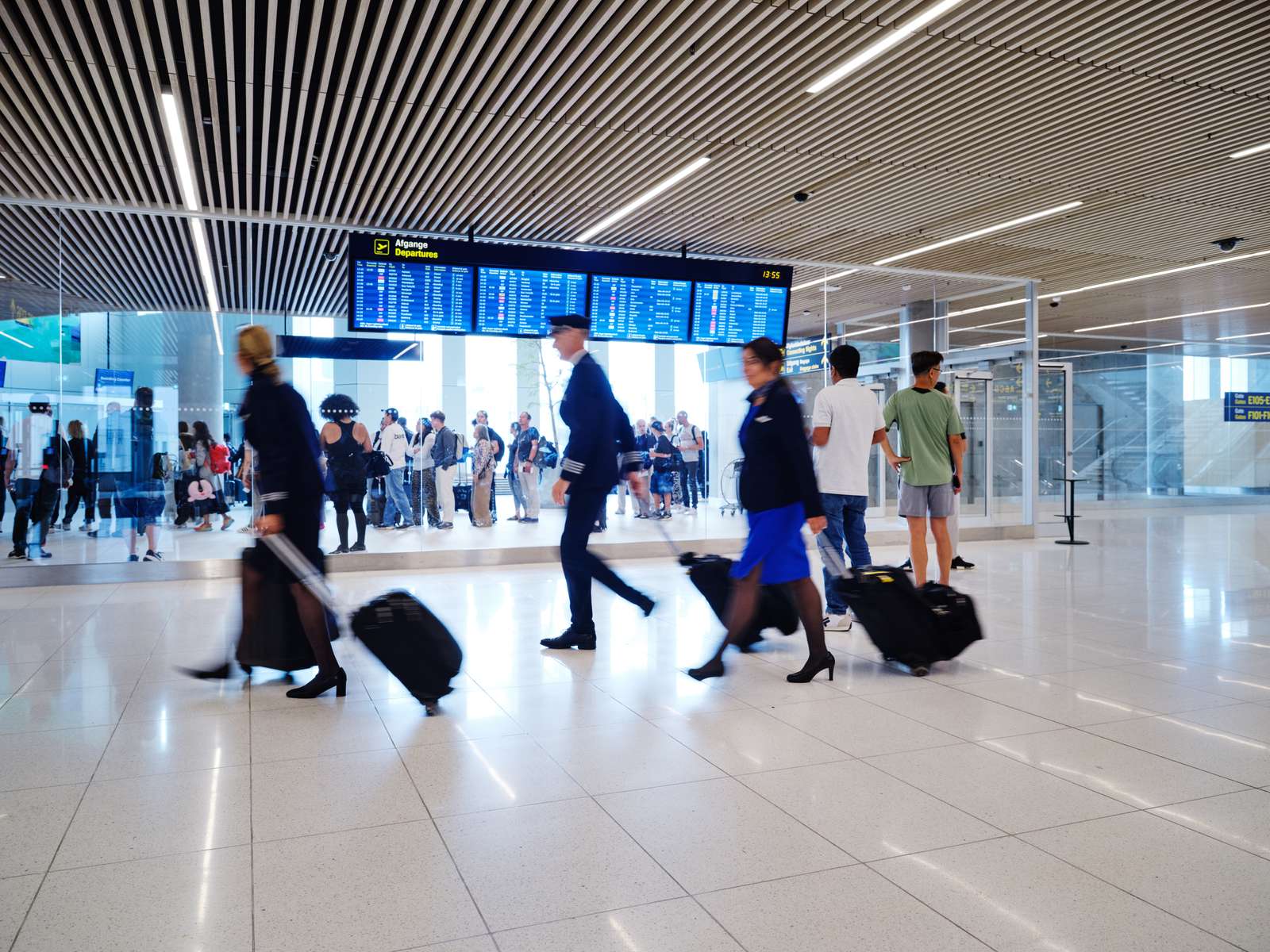Record seat occupancy in September for Copenhagen Airport
| Company | Copenhagen Airport |
|---|---|
| Date | 03.10.2025 |
A total of 3.1 million passengers passed through Copenhagen Airport in September. This was a year-on-year increase of 9 per cent, making it the busiest September in CPH’s 100-year history. Growth in transfer traffic from Norway and Sweden is strong and flights are more fully booked than ever.
 September was the busiest autumn month ever for Copenhagen Airport. With 3.1 million passengers passing through the terminals, the number of people travelling to and from the airport was 9 per cent higher than in the same month last year. The enthusiasm for travel remains strong, and September marked both the end of the busy summer holiday season and the beginning of the late summer season – a popular period for city breaks, family visits and cultural tours around Europe. At the same time, more business travellers are again among passengers.
September was the busiest autumn month ever for Copenhagen Airport. With 3.1 million passengers passing through the terminals, the number of people travelling to and from the airport was 9 per cent higher than in the same month last year. The enthusiasm for travel remains strong, and September marked both the end of the busy summer holiday season and the beginning of the late summer season – a popular period for city breaks, family visits and cultural tours around Europe. At the same time, more business travellers are again among passengers.
“We are seeing solid and sustained growth in passenger traffic, driven by a strong interest in travelling the world – both among holidaymakers and business travellers. At the same time, we continue to see growing numbers of visitors coming to Denmark to experience Danish ‘hygge’ and our internationally celebrated gastronomy scene,” says Peter Krogsgaard, Chief Commercial Officer of Copenhagen Airports.
Close to 24.5 million passengers travelled through Copenhagen Airport in the first nine months of the year. Traffic grew steadily throughout winter, spring and summer, and this record September has further consolidated the growth.
More passengers per aircraft and modern aircraft types
The many travellers will find that more seats are occupied than previously. The occupancy rate reached 80 per cent in September, the highest level ever measured on flights to and from Copenhagen Airport in an autumn month.
“It is very positive that aircraft are more full and really good that there are more passengers on average on each aircraft, because it increases efficiency and supports a more responsible use of aircraft capacity,” says Krogsgaard.
At the same time, significant advances are happening in the types of aircraft landing and taking off at Copenhagen Airport. This year, 37 per cent of aircraft have been newer models with less climate impact, such as the Airbus A320neo and the Boeing 737 MAX. By comparison, the share in 2019 was just 5 per cent.
“When airlines invest in new, modern aircraft, this has a significant effect on both the environment and the passenger experience. We see a clear trend in fleets being updated, and we expect this to continue,” says Peter Krogsgaard.
The new aircraft types are both more fuel efficient and less noisy. For example, an A320neo uses 22 per cent less fuel and makes 50 percent less noise than its predecessor, the A320.
Transfer traffic and southern European holiday travel peaked
A growing number of passengers at the airport are travellers flying to their final destinations via Copenhagen. The number of transfer passengers increased by 35 per cent year-on-year in September. In particular, the routes between Copenhagen and Norway, Sweden and Finland are popular among transfer passengers, who use the airport for a layover on their travel abroad.
“Copenhagen Airport plays an important role as a traffic hub for the entire Nordic region. It is a clear trend that more and more travellers choose to fly via Copenhagen, especially our Nordic neighbours. Transfer passengers strengthen both the airport’s position and connectivity to international destinations. This is very positive for Denmark, as it means that the population and the many Danish companies are closely linked to the rest of the world,” explains Peter Krogsgaard.
 September is a peak summer holiday month for southern Europeans, and this is also reflected in passenger numbers. There has been a rise in the number of passengers on routes to and from southern Europe – especially Spain and Italy. Copenhagen Airport is also increasingly used as a transfer airport to and from Spain and Italy, which underlines the airport’s status as an international hub.
September is a peak summer holiday month for southern Europeans, and this is also reflected in passenger numbers. There has been a rise in the number of passengers on routes to and from southern Europe – especially Spain and Italy. Copenhagen Airport is also increasingly used as a transfer airport to and from Spain and Italy, which underlines the airport’s status as an international hub.
Drones disrupted traffic
Regrettably, September was also the month when air traffic was seriously disrupted by drone activity. In addition to the fundamental concern about drone activity at Copenhagen Airport, the incident also affected a large number of passengers.
“It has a huge impact on the individual traveller when their departure or arrival is cancelled, and in collaboration with the airlines and ground handling companies, we focused on helping affected passengers to return home safely or book new flights,” says Peter Krogsgaard.
Busy autumn break ahead
With September behind us, Copenhagen Airport looks forward to a busy autumn break in which more than a million passengers are expected to travel through the terminals. On the busiest days, up to 115,000 passengers are expected, and the airport is ready to welcome them – whether they are going on a sun break, a city weekend or are travelling further afield.

Contact
Lufthavnsboulevarden 6
2770 Kastrup
Copenhagen
Denmark
CVR 14 70 72 04
- +45 3231 3231

